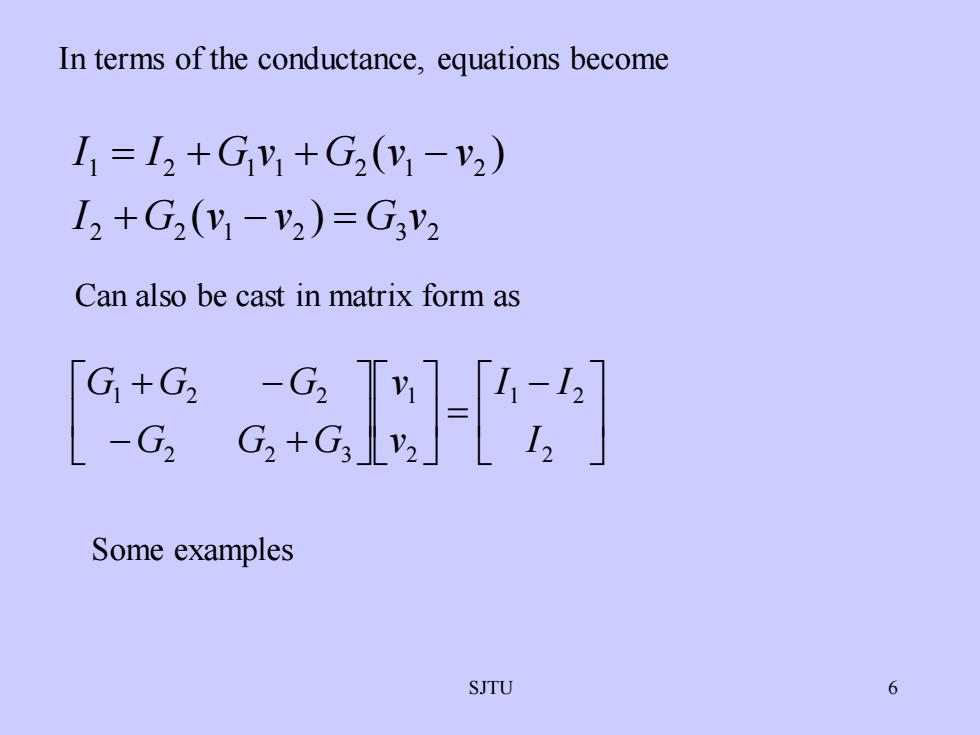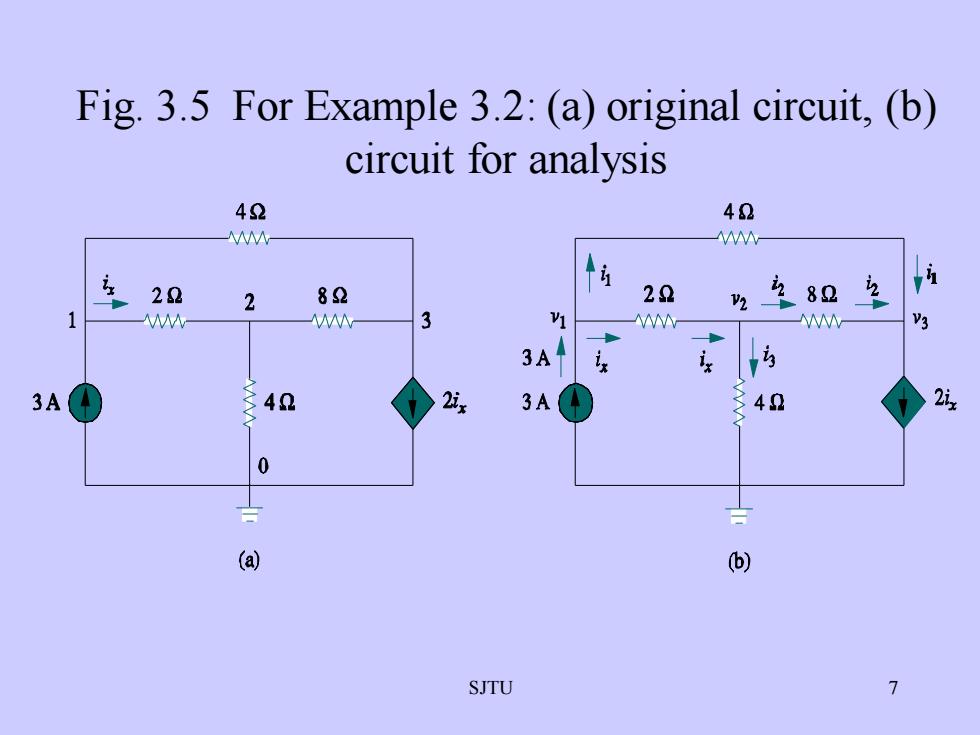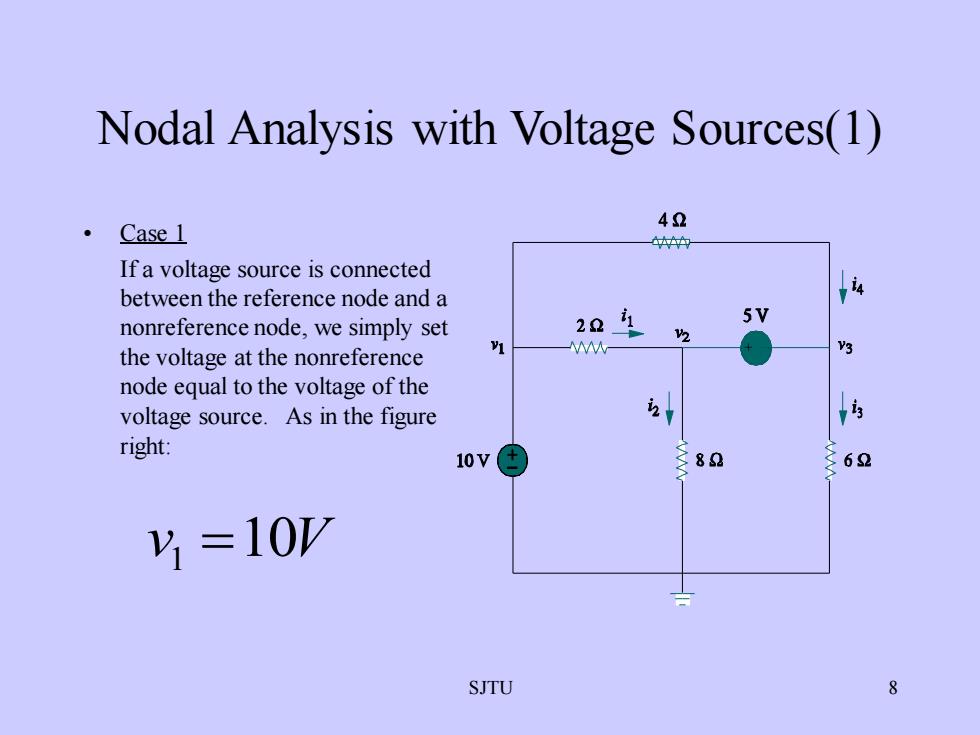
In terms of the conductance,equations becomeI, = I2 +GV +G,(Vi- V2)I2 +G2(Vi - V2)=G3V2Can also be cast in matrix form as[G +G22-G2[I-12-G2Gz+G,JLy2↓LI2Some examplesSJTU6
SJTU 6 In terms of the conductance, equations become 2 2 1 2 3 2 1 2 1 1 2 1 2 ( ) ( ) I G v v G v I I G v G v v + − = = + + − Can also be cast in matrix form as − = + − − + 2 1 2 2 1 2 3 2 2 1 2 I I I v v G G G G G G Some examples

Fig. 3.5 For Example 3.2: (a) original circuit, (b)circuit for analysis4242i22诊2928222822V23V1V33设3AK2iy2ix3A403A400一(a)(b)7SJTU
SJTU 7 Fig. 3.5 For Example 3.2: (a) original circuit, (b) circuit for analysis

Nodal Analysis with Voltage Sources(1)42CaselAAAIf a voltage source is connected1betweenthereferencenodeanda5V1122nonreferencenode, we simply setV2V1V3the voltage at the nonreferencenode equal to the voltage of thei2voltage source.As in the figureright:826210VV =10V8SJTU
SJTU 8 Nodal Analysis with Voltage Sources(1) • Case 1 If a voltage source is connected between the reference node and a nonreference node, we simply set the voltage at the nonreference node equal to the voltage of the voltage source. As in the figure right: v1 =10V